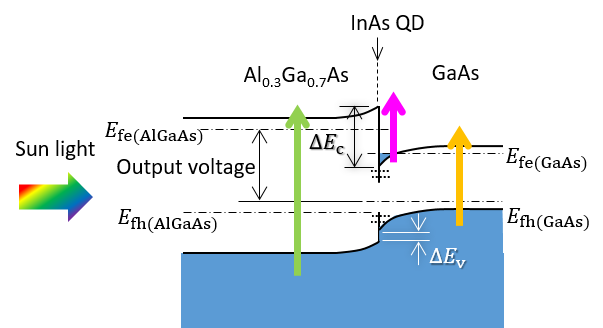Researchers at Japan’s Kobe University Graduate School of Engineering are seeking to design a new technology that could significantly increase the efficiency of solar cells. The professor Kita Takashi, who is leading the research project, claims that the new cell is being designed to capture the spectral components of longer wavelengths, which are usually lost during transmission through the cell.
The scientists believe that the transmission loss for below-gap photons can be used for producing additional photocurrent, thus increasing the efficiency of the solar cell. In order to reduce these losses, the research team utilized two small photons from the energy transmitted through a single-junction solar cell containing a hetero-interface formed from semiconductors with different bandgaps.
The Japanese scientists claim the first experiments have demonstrated that the loss reduction “is over 100 times more effective compared to previous methods that used intermediate bands.”
The research team explained that the below-gap photons for Al0.3Ga0.7As excite gallium arsenide (GaAs) and generate electrons at the hetero-interface. These electrons are then pumped upwards into the Al0.3Ga0.7As barrier by below-gap photons for GaAs. This two-step photon up-conversion, Takashi said, is achieved by introducing indium arsenide (InAs) quantum dots at the hetero-interface.
“In theory,” Takashi added, “30% energy-conversion efficiency is the upper limit for traditional single-junction solar cells, as most of the solar energy that strikes the cell passes through without being absorbed, or becomes heat energy instead. Experiments have been taking place around the world to create various solar cell designs that can lift these limitations on conversion efficiency and reduce the loss of energy. The current world record is at 46% percent for a 4-junction solar cell. If the energy-conversion efficiency of solar cells surpasses 50%, it would have a big impact on the cost of producing electricity.”
This content is protected by copyright and may not be reused. If you want to cooperate with us and would like to reuse some of our content, please contact: editors@pv-magazine.com.




This is a great study. Let us hope for cheaper solar power